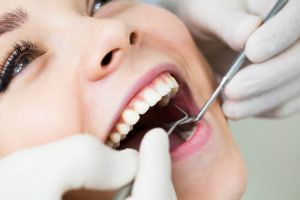Have you noticed a whitish or reddish, pimple-like bump on your gums? This might be a sign of an infection. But you know what, sometimes, infections concerning our teeth and gums can be hidden from us and will only be revealed if we feel tooth abscess symptoms. So, what should we do in case we suspect that the dental discomfort we are feeling is tooth abscess symptoms already? Will they be warranted as reasons to seek dental emergency services?
Tooth Abscess
An abscessed tooth happens when bacteria invade and damage the tooth and its surrounding tissues. While we already have bacteria living inside our mouths and digestive system to help us breakdown and digest food, other harmful bacteria can be presented to our teeth and gums through plaque and tartar build-up. Without proper dental hygiene, the germ-infested plaque will then attack the tooth surface and the surrounding gum tissue that may lead to abscess and pus formation.
Type of Tooth Abscess
The type of abscess in the tooth or gums will determine the severity and location of tooth abscess symptoms. They will also suggest the need to get emergency dental care or not.
Gingival Abscess
The type of infection causes the abscess or pus formation in the gums only. It is not related to any tooth condition and is not near the tooth surface for it to cause decay.
Periodontal Abscess
This type of abscess is found in the gum near the tooth. It is sometimes located on the gums in the spaces between teeth. This type also can affect the structures underneath the tooth like the bone.
Periapical Abscess
This type causes a pus formation at the root of the tooth. This is a critical type because the pulp, where the blood vessels and nerves are located, might get affected by the infection, causing the spread and possibility of complications to follow.
Tooth Abscess Symptoms

Here are the common tooth abscess symptoms that patients often complain to their dentist or emergency dentists, in any case:
- Pain. The pain may be on and off, directly affecting your tooth or the gums depending on the location of the abscess. The discomfort may radiate to neighbouring body parts like the ears, the jaw area, or even your neck. The mere actions of mastication (chewing or biting food) can cause pain.
- Swelling gums or the entire face depending on the severity of the infection
- Redness on the gums in between teeth
- Sensitivity to extreme temperatures on the affected area
- The tooth near the affected area or the one involved may become loose and stained
- Foul-smelling breath
- Fever may be present or not
- General body malaise
Are Tooth Abscess Symptoms Considered a Dental Emergency?
The answer to this question is a big YES! As mentioned earlier, a mild abscess may not present any signs or indications of its presence. So the mere fact that you already feel tooth abscess symptoms possibly means that your infection is moderate to severe in nature. It is imperative then that you seek dental emergency care from the nearest available dental emergency services. Hospital emergency departments may help a bit, but because they are not equipped with dental services, the best they can provide is to give you pain relievers and antibiotics.
How Do Emergency Dentists Address Tooth Abscess Symptoms?

The main goal for dentists when it comes to treating tooth abscess is to contain the infection, clear up any probable source of future spread or complication, and relieve the discomfort. These objectives are also what dental emergency professionals have in mind, but they would focus on draining the pus first and relieving you of your tooth abscess symptoms.
The emergency dentist first assesses which part of the oral cavity is affected by the infection. Once he determines the source and the correct location, he either aspirates the pus to relieve swelling or incise the gums to effectively drain and clean the abscessed area. He may then prescribe you with antibiotics to combat the bacteria that caused the infection, or he can perform an emergency root canal treatment if the abscess already affects the pulp. This will prevent the infection from spreading to other parts of the body through the blood vessels inside the tooth root.


Recent Comments